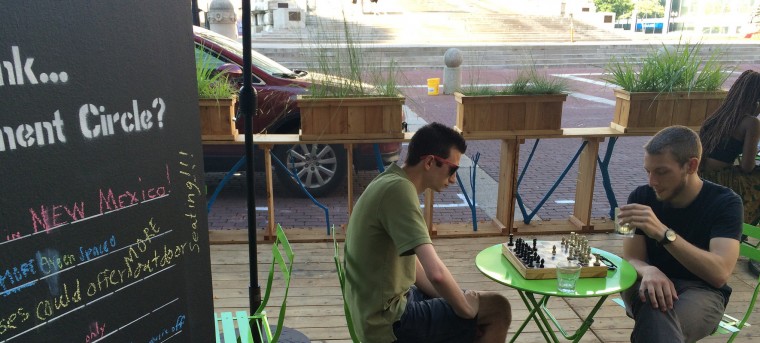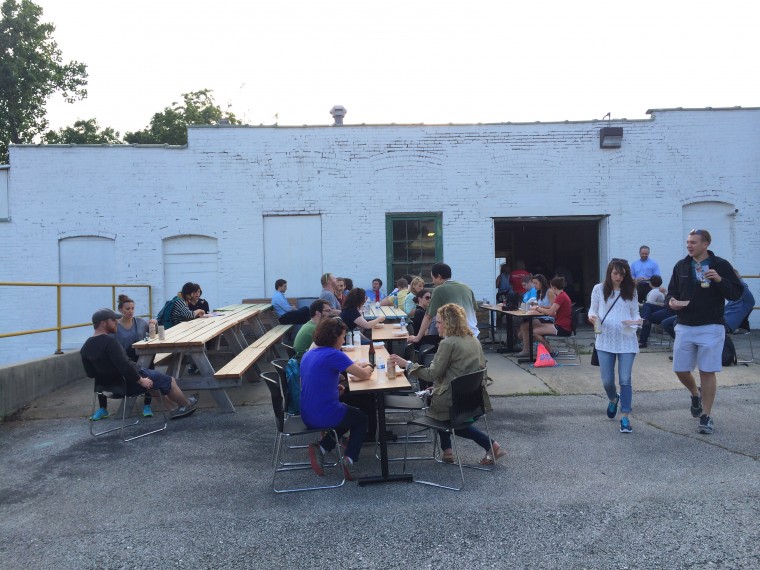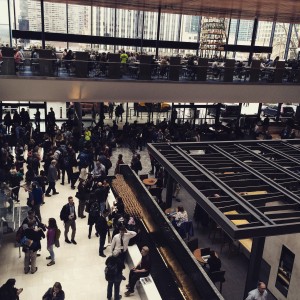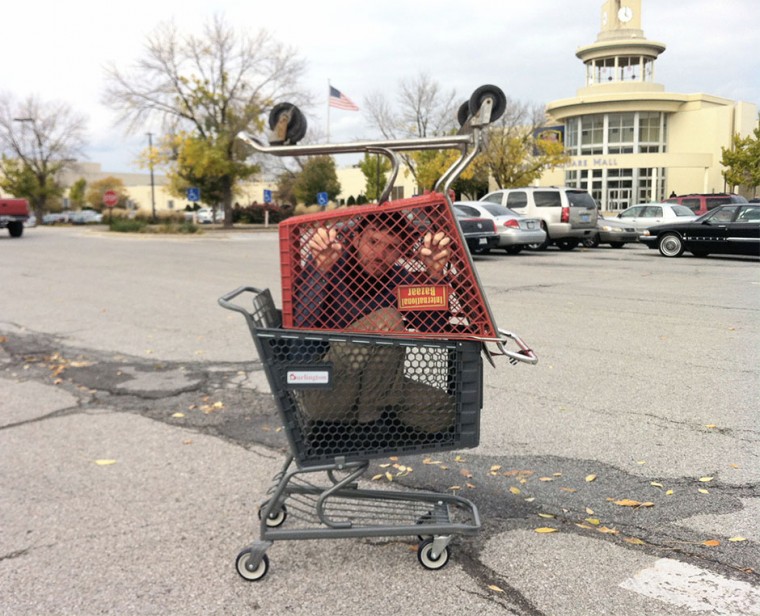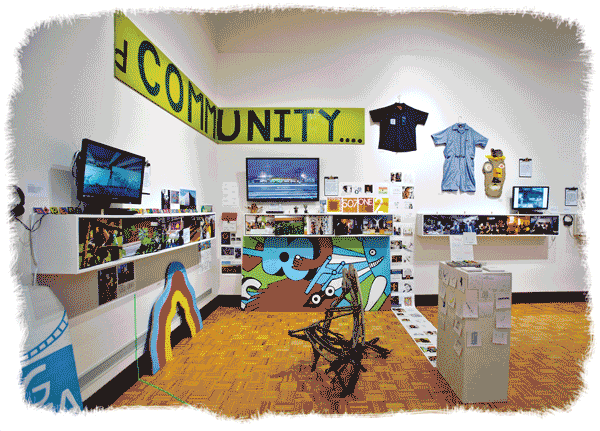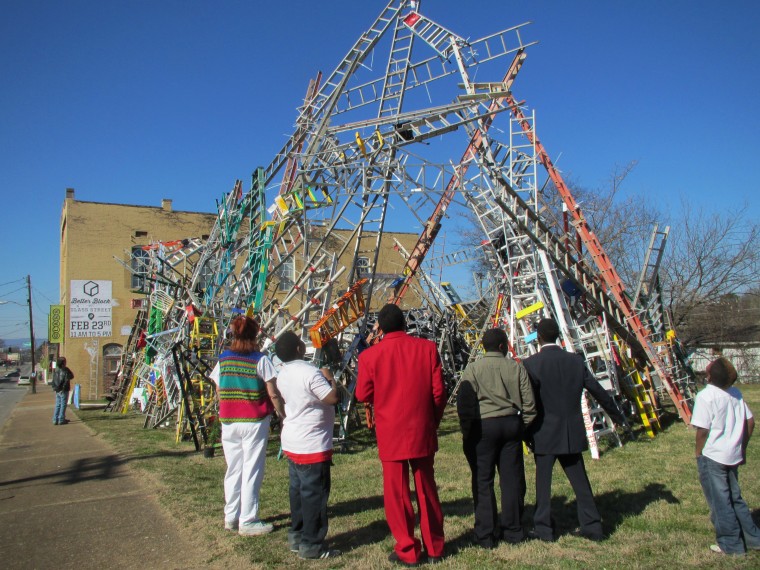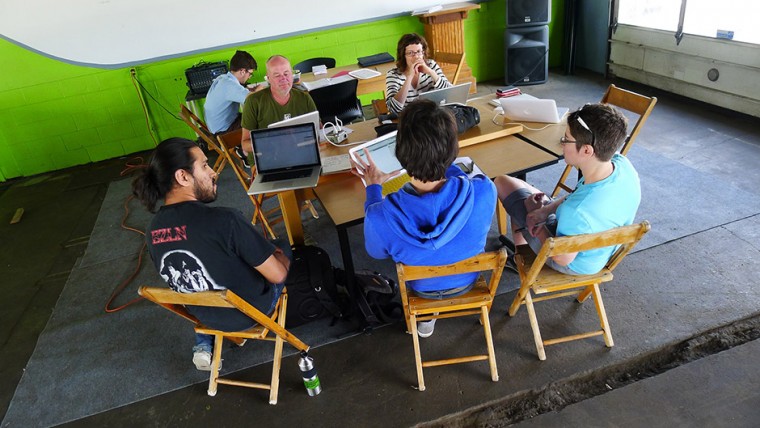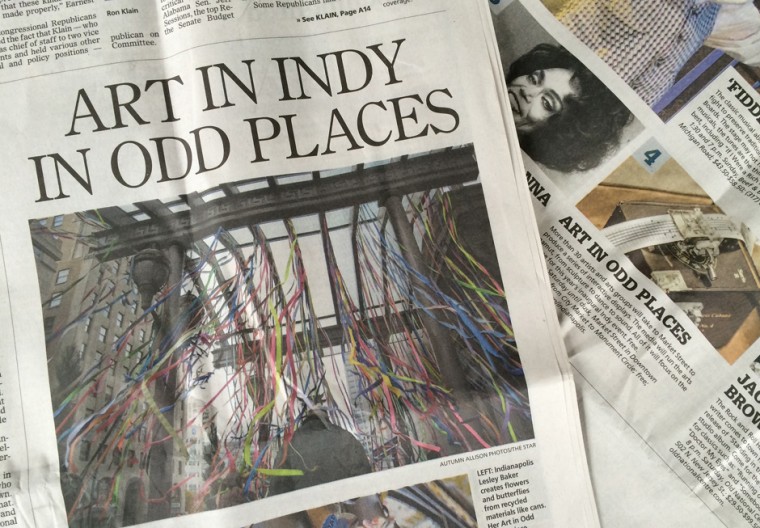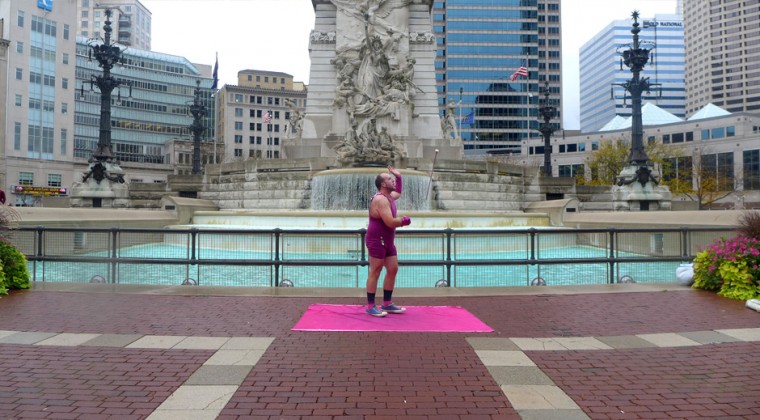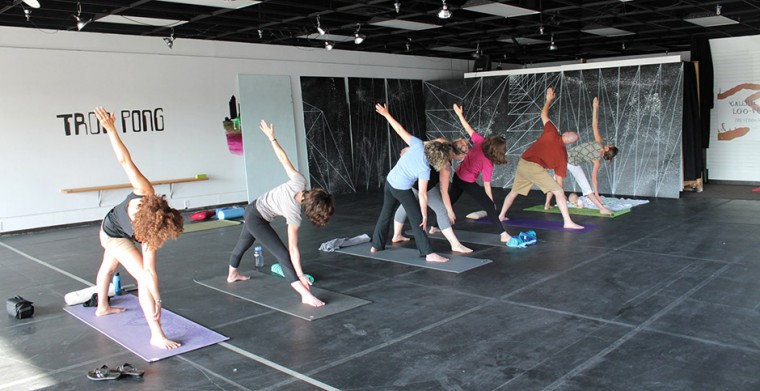By Big Car Collaborative staff
A series exploring creative approaches to revitalizing communities and improving public places runs from Sept. 15 to Oct. 21 in Indianapolis, with talks and workshops led by internationally recognized experts on placemaking. The series, which is free to attend, will benefit artists, designers, planners, developers, and other community leaders across sectors in the Indianapolis area.
Big Car Collaborative — currently teaming up with The City of Indianapolis on the Spark Monument Circle creative placemaking project — is organizing the series, called Rethink Reconnect Reclaim, in partnership with Reconnecting to Our Waterways (an ongoing collective-impact effort to improve Indianapolis streams and rivers), Indianapolis LISC, The City of Indianapolis, and several others. The placemaking series will help attendees learn about successful strategies and meet leading thinkers in the fields of environmental art, creative placemaking, and tactical urbanism. In pursuit of a better city, the idea is to bring people together to reimagine public spaces and draw new energy to the city’s waterways.
“This is a great opportunity for people to learn and share ideas together,” said Big Car executive director Jim Walker. “And we’re excited to help further strengthen partnerships as placemaking becomes a key part of community development and is integrated into the practice of more artists, designers and planners in our city.”
Other partners on the series include the Indiana Arts Commission, Love Indy, Indianapolis City Market, IndyGo, Harrison Center for the Arts and City Gallery, StreamLines, White River Festival, DaVinci Pursuit, Ball State University Department of Landscape Architecture, Indianapolis Neighborhood Resource Center (INRC), TEDxIndianapolis, and Spark Monument Circle.
“As we consider the future of Indy, it’s crucial that we put in the time and effort to creatively strategize about the future of our public spaces,” said Alan Goffinski, Big Car’s Creative Placemaker for Reconnecting to Our Waterways and lead organizer of the series. “There’s a lot we can learn from experts, and from each other.”
Details about Rethink Reconnect Reclaim:
THE LONG BLUE LINE: DISCUSSION WITH ARTIST SEAN DERRY
Sept. 15, at 7 p.m. Flat 12 Bierwerks, 414 Dorman St. — 21 and over
In his project “Charting Pogue’s Run”, Sean Derry set out to memorialize our native waterway with a long, blue line and iron markers mapping the stream’s 1831 path. Derry will share his perspective and experience of completing such a massive public art project.
THE POGUE’S RUN PURSUIT
Sept. 16, 6:30-8 p.m. Spark Welcome Trailer, Monument Circle SW Quad
A 90-minute walk lead by Artist Sean Derry will take you along the historical but hidden banks of Pogue’s Run. Navigate old-timey maps along our modern city thoroughfares. Consider the value of creativity and natural resources in our modern cities.
ENVIRONMENTAL ART: MARY MISS
Sept. 23 at 7:30 p.m. The Platform, 202 E. Market St.
This discussion with environmental artist Mary Miss offers insight into her work and creative process with a focus on her StreamLines project underway now in Indianapolis.
SPARKING MONUMENT CIRCLE: ASH ROBINSON, STUART HYATT
Oct. 9 at noon. Spark Welcome Trailer, Monument Circle SW Quad
During this casual brown-bag lunch, artists involved with Spark will discuss placemaking and projects that engage people before a brief walk around the Circle led by Big Car’s Jim Walker.
PLACEMAKING LUNCH CONVERSATION: DAVID ENGWICHT
Oct. 15 at noon. Spark Welcome Trailer, Monument Circle SW Quad
With Spark: Monument Circle winding to a close let’s consider the impact of creative placemaking projects. Bring your lunch as Australian public space guru David Engwicht discusses the challenges and outcomes of creatively transforming our shared spaces.
RECONNECTING TO OUR WATERWAYS WORKSHOP:
ANTHONY GARCIA, DAVID ENGWICHT and others
Oct. 21, 11 a.m. -1 p.m. The Hall, 202 N. Alabama St.
This workshop invites artists to conspire for the good of their communities. Creative placemaking and tactical urbanism experts from Indianapolis, Miami and Australia will assist artists in developing creative interventions for public space along our waterways. Teams will then be commissioned to put their plans to action.
STREET RECLAIMING: DAVID ENGWICHT
Oct. 21, 6:30 p.m. The Platform, 202 E. Market St.
David Engwicht is one of the world’s most inventive thinkers and writers on creating vibrant public spaces. Gain insight from his experiments in Creative Placemaking and explore how they relate to our public spaces in Indianapolis.
SPEAKER BIOS
SEAN DERRY: In his artistic practice, Derry explores the lived experience of a place and investigates alternative strategies for inhabiting these environments. Derry’s work includes installations, public commissions and curatorial projects. He has developed projects for the Rivers of Steel Heritage Area, Trust for Public Land, National Institute for Fitness and Sport, and Waterman Agricultural Center. He has completed public commissions for the University of Alaska, the City of Indianapolis, and Indianapolis Cultural Trail. In 2006, Derry’s Charting Pogue’s Run was featured in the Americans for the Arts Year in Review. http://www.seanderry.com
DAVID ENGWICHT: Engwicht has over 25 years experience in placemaking. He is a passionate designer, artist, author, communicator, and social inventor, best known as the creator of the Walking School Bus. PPS in New York describe him as “one of the world’s most inventive thinkers on creating vibrant public spaces”. Nothing gives David greater joy than working with communities to breathe new life into dead spaces. He’s a 2015 TEDxIndianapolis speaker. http://www.creative-communities.com
ANTHONY GARCIA: Garcia, a leader in civic advocacy in South Florida, is principal of the Street Plans Collaborative, and serves as part-time faculty at the University of Miami School of Architecture. He is a co-author Tactical Urbanism and a leading expert in short-term action for long-term change. He’s a 2015 TEDxIndianapolis speaker. http://www.streetplans.org
STUART HYATT: Hyatt a Grammy-nominated artist and musician who creates interdisciplinary media projects in the public realm. His work facilitates collaboration with people and places often overlooked by conventional contemporary art practice. Hyatt holds advanced degrees in both architecture and sculpture. He creates site-based work with M12, a collective known for creative projects related to rural cultures and landscapes. http://www.stuarthyatt.org
MARY MISS: Miss has reshaped the boundaries between sculpture, architecture, landscape design, and installation art by articulating a vision of the public sphere where it is possible for an artist to address the issues of our time. She has developed the “City as Living Lab”, a framework for making issues of sustainability tangible through collaboration and the arts, with Marda Kirn of EcoArts Connections. Trained as a sculptor, her work creates situations emphasizing a site’s history, its ecology, or unnoticed aspects of the environment. http://www.marymiss.com
ASH ROBINSON: Robinson, an Indianapolis-based public artist and furniture maker, established her artistic voice at the Herron School of Art and Design, where she received her BFA in Furniture Design in 2010 before continuing her studies at San Diego State University. By focusing on political and cultural issues, Robinson’s work flirts with tradition and the avant-garde while striving to expose the tormented mind and the social stereotypes that plague it.

